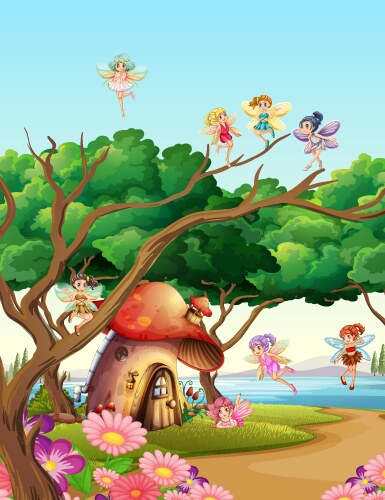Ready to step into a world where nature meets art? 🌼 Whether you’re a beginner with a sketchbook or a digital artist dreaming of lush landscapes, garden illustration opens a gateway to creativity, peace, and endless inspiration. From whimsical wildflowers to serene Zen gardens, every drawing becomes a story — alive with color, balance, and imagination. Let’s dig into how to bring your dream garden to life on paper (or screen) with tips, techniques, and artistic secrets that make your work bloom beautifully! 🌷💚🌿 Introduction: The Art of Garden IllustrationA garden illustration isn’t just a drawing — it’s a visual escape. It can be realistic, botanical, minimalistic, or fantastical. Artists have long used garden scenes to express beauty, tranquility, and harmony with nature. Think of Monet’s gardens in Giverny or modern digital art full of pastel peonies and ivy arches — the charm is timeless.No matter your style, illustrating gardens helps you:🌸 Relax and focus.🌿 Explore color palettes inspired by nature.🌼 Develop your artistic composition skills.🌻 Create art that evokes emotion and calm.Your own garden illustration magic is just waiting to blossom! 🌺🎨 Essential Tools for Garden IllustrationBefore we start drawing, here’s what you’ll need (depending on your medium):✏️ Traditional Tools:Sketchbook or watercolor paperPencils (HB, 2B, 4B)Fine liners or ink pensColored pencils, watercolors, or gouacheEraser and blending tools💻 Digital Tools:Tablet or iPad with stylus (e.g., Procreate, Photoshop, Clip Studio Paint)Custom brushes (for leaves, textures, and petals)Layers and color adjustment tools💡 Pro Tip: Combine both worlds! Start with a pencil sketch, then scan and color digitally for that crisp-yet-organic look.🌼 Step-by-Step: How to Create a Magical Garden Illustration🌱 Step 1: Start with CompositionDecide what kind of garden scene you want to create:🌸 A cozy backyard garden🌿 A lush tropical oasis🌻 A blooming flower field🌷 A fantasy garden with glowing plantsSketch the layout lightly — use circles or shapes to plan where trees, bushes, and flowers will go.🌼 Step 2: Build the BackgroundAdd the sky, pathways, fences, or water features (like ponds or fountains). Keep your perspective balanced and natural.🌸 Step 3: Add Foliage and FlowersStart layering plants:Draw large shapes for trees and shrubs first.Add smaller plants like tulips, daisies, or lavender next.Finish with climbing vines or potted plants.Use overlapping elements to create depth — that’s where your garden illustration really comes to life!🌻 Step 4: Bring in ColorNature loves variety, but harmony matters. Choose 3–4 main hues and mix complementary shades.Example palettes:🌿 Fresh Garden: Sage green, blush pink, lemon yellow.🌺 Romantic Garden: Lavender, rose, cream, deep green.🌼 Tropical Garden: Teal, coral, gold, and emerald.🌷 Step 5: Add Texture and LightAdd shading to leaves and petals using cross-hatching, watercolor washes, or soft digital brushes. Highlight sunlit areas to give warmth and dimension.✨ Bonus tip: Add tiny sparkles, butterflies, or misty light rays to create true “garden magic.”🌸 Popular Garden Illustration StylesHere are a few trending styles that bring out your unique touch:🌿 1. Minimalist Botanical Line Art – Simple black ink outlines of leaves and flowers. Elegant and modern.🌼 2. Watercolor Cottage Garden – Soft brushstrokes, pastel colors, and cozy countryside vibes.🌷 3. Whimsical Fantasy Garden – Oversized flowers, glowing mushrooms, maybe a fairy or two!🌺 4. Digital Japanese Zen Garden – Calm tones, stone textures, and peaceful balance.🌻 5. Illustrated Flower Journal – Combine sketches and handwritten plant names for a creative diary feel.🌿 Tips for Making Your Garden Illustration Stand Out💫 1. Observe real gardens. Notice how plants overlap, bend toward light, and vary in color.🎨 2. Mix reality and imagination. Add dreamlike colors or floating petals for magic.🌸 3. Layer textures. Use blending or stippling to show soft vs. rough surfaces.🌷 4. Play with scale. Oversized flowers or tiny humans create storybook charm.💚 5. Add mood lighting. Morning glow, sunset tones, or moonlight can completely change your scene.🌻 When to Use Garden IllustrationsThese dreamy artworks fit beautifully into so many creative spaces:🌿 Home decor prints or greeting cards🌸 Journals and planners🌼 Book illustrations or children’s stories🌷 Branding for eco-friendly or floral products🌺 Digital wallpapers and art portfolios🌼 Conclusion: Let Your Garden Art BloomEvery garden illustration is a reflection of your creativity and connection to nature. 🌿 Whether you’re sketching wildflowers or crafting a fantasy forest, remember — there’s no wrong way to draw a garden.So grab your pen, stylus, or paintbrush, and let the magic bloom in every line, color, and petal. 🌸✨Because in your hands, Garden Illustration Magic Awaits! 🌷🎨💚

